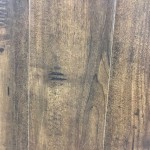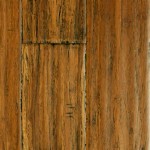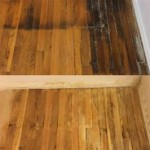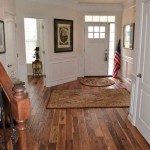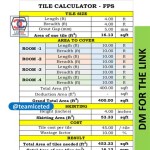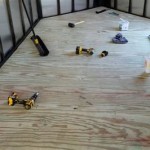Using Wood Flooring As Wall Covering: A Comprehensive Guide
Wood flooring, traditionally associated with underfoot surfaces, is increasingly finding its place as an innovative and aesthetically pleasing wall covering. This unconventional application offers a unique blend of texture, warmth, and visual interest, transforming ordinary rooms into statement spaces. While the concept might seem daring, the practicalities are well within reach for both seasoned DIY enthusiasts and professional contractors. This article delves into the considerations, benefits, installation techniques, and maintenance aspects of utilizing wood flooring as a wall covering.
The allure of using wood flooring on walls lies in its inherent versatility. From rustic reclaimed wood to sleek, modern engineered planks, the options are vast and capable of complementing almost any design aesthetic. Furthermore, wood introduces a natural element that is often lacking in contemporary interiors, promoting a sense of tranquility and connection to the outdoors. This trend is particularly prevalent in designs aiming to create biophilic environments, where natural materials are intentionally incorporated to enhance well-being.
However, the transition from floor to wall isn't as simple as directly transferring the same installation methods. Walls present different structural and environmental challenges compared to floors. Careful planning, proper preparation, and appropriate techniques are crucial to ensure a successful and long-lasting installation. Factors such as wall evenness, moisture levels, and the weight of the wood must be carefully considered.
Key Considerations Before Installation
Before embarking on a wood flooring wall covering project, several key factors need careful evaluation. Failing to address these upfront can lead to problems down the line, potentially compromising the integrity and appearance of the installation.
First and foremost, the type of wood flooring selected plays a significant role. Solid wood, while offering a timeless appeal, can be heavier and more susceptible to changes in humidity compared to engineered wood. Engineered wood, with its multi-layered construction, is generally more stable and often a better choice for walls, especially in areas with significant humidity fluctuations. Additionally, the thickness of the planks needs to be considered, as thicker planks will naturally add more weight to the wall.
Secondly, examine the wall surface itself. Is it perfectly level? Are there any existing imperfections or damage? Any unevenness needs to be addressed before installation. This might involve patching holes, sanding down high spots, or even applying a skim coat of drywall compound to create a smooth and uniform surface. A perfectly level surface ensures that the wood planks will lie flush against the wall, preventing gaps and creating a professional finish.
Thirdly, moisture control is paramount. Wood is a hygroscopic material, meaning it absorbs and releases moisture from the surrounding environment. Excessive moisture can cause the wood to warp, cup, or even develop mold. Ensuring that the wall is free from any leaks or dampness is vital. In high-humidity areas, consider using a moisture barrier between the wall and the wood flooring to prevent moisture migration. Also, acclimating the wood flooring to the room's environment for several days before installation is crucial, allowing it to adjust to the temperature and humidity levels.
Installation Techniques for Wood Flooring on Walls
Once the preparatory steps are complete, the actual installation process can begin. There are several methods to attach wood flooring to walls, each with its pros and cons. The choice of method will depend on the type of wood flooring, the wall surface, and the desired aesthetic.
One common method involves using construction adhesive. High-quality construction adhesive, specifically designed for bonding wood to various surfaces, can provide a strong and reliable bond. The adhesive is typically applied to the back of the wood plank, and then the plank is pressed firmly against the wall. It's crucial to use the correct type of adhesive and to follow the manufacturer's instructions carefully. In some cases, it might be necessary to supplement the adhesive with finishing nails or brad nails to provide additional support while the adhesive cures.
Another method involves using a cleat system. This approach involves attaching wooden cleats horizontally to the wall, providing a framework to which the wood flooring can be attached. The cleats are typically screwed into the wall studs, providing a secure and stable base. The wood flooring planks are then attached to the cleats using finishing nails or screws. This method is particularly useful for heavier wood flooring and allows for easier removal and replacement of planks if needed.
For tongue-and-groove flooring, a more intricate but visually appealing method involves creating a "floating wall." This technique involves constructing a frame slightly off the wall, allowing the flooring to expand and contract without affecting the wall itself. The tongue-and-groove system is then utilized to interlock the planks, creating a seamless and uniform surface. This method requires a high degree of precision and skill but results in a professional and durable installation.
Irrespective of the chosen method, it's essential to maintain consistent spacing between the planks, either with spacers or by carefully aligning the edges. This ensures a uniform appearance and prevents any noticeable gaps. Furthermore, carefully consider the orientation of the planks. Horizontal installation can create a sense of spaciousness, while vertical installation can add height to a room. Diagonal installation, while more challenging, can create a dramatic and eye-catching effect.
Maintaining Wood Flooring Wall Coverings
Once the wood flooring is installed on the wall, proper maintenance is essential to preserve its appearance and longevity. While wall coverings don't experience the same level of foot traffic as floors, they are still susceptible to dust, dirt, and environmental factors.
Regular dusting is crucial to prevent dust buildup, which can dull the wood's finish over time. A soft cloth or a vacuum cleaner with a brush attachment can be used to gently remove dust from the surface. Avoid using harsh chemicals or abrasive cleaners, as these can damage the wood's finish. Instead, opt for a mild soap and water solution, applied with a damp cloth. Ensure that the cloth is wrung out thoroughly to prevent excessive moisture from penetrating the wood.
For wood flooring with a polyurethane finish, occasional polishing can help maintain its shine and protect it from scratches. Use a polish specifically designed for wood flooring and follow the manufacturer's instructions carefully. Avoid using waxes, as these can create a buildup that is difficult to remove.
Protecting the wood flooring from direct sunlight is also important, as prolonged exposure to UV rays can cause the wood to fade or discolor over time. Consider using window treatments, such as curtains or blinds, to filter the sunlight. Additionally, avoid placing heat sources, such as radiators or space heaters, directly against the wood flooring, as this can cause it to dry out and crack.
Addressing any minor damage promptly is crucial to prevent it from escalating. Scratches can be repaired with touch-up markers or by applying a small amount of wood filler. Deeper gouges might require professional repair. Promptly addressing any water damage is especially important, as water can cause the wood to warp or rot. Ensure that any leaks are repaired immediately and that the affected area is thoroughly dried. With proper care and maintenance, wood flooring wall coverings can provide years of beauty and enjoyment.

Wall Cladding With Flooring Material 2024 09 23 Floor Trends Installation

Apeal Of Wooden Flooring In Wall Paneling And Bulkheads Finfloor

Trend Wood Flooring As Wall Covering Déco Surfaces

Engineered Wood Cladding Inovar Floor

What To Do With Your Left Over Wooden Flooring Discount Depot Blog

How To Install Vinyl Plank Flooring On Walls Europine

Laminate And Vinyl Cladding Finfloor

7 Beautiful Wood Flooring Wall Paneling Gallery

Decorating Walls With Floor Panels Dublin Carpet

Laminate Flooring On Walls For A Warm And Luxurious Feel Of The Interior Luxury Bedroom Design
Related Posts

